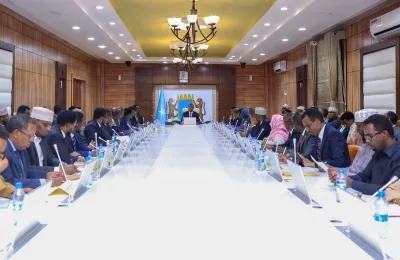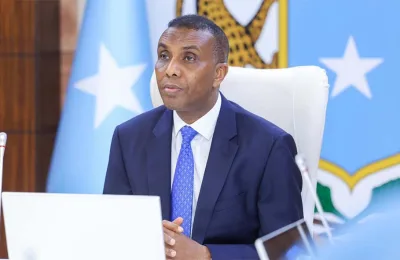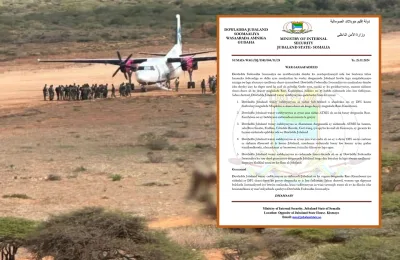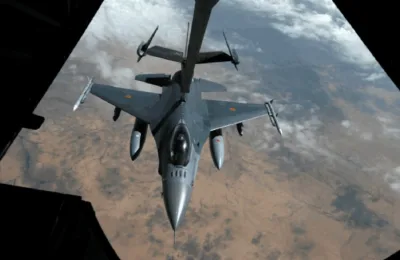The American military has escalated a battle against the Shabab, an extremist group affiliated with Al…

People standing near the wreckage of a recent Shabab-claimed suicide car bomb attack on a hotel in Mogadishu, Somalia.CreditCreditFeisal Omar/Reuters
The American military has escalated a battle against the Shabab, an extremist group affiliated with Al Qaeda, in Somalia even as President Trump seeks to scale back operations against similar Islamist insurgencies elsewhere in the world, from Syria and Afghanistan to West Africa.
A surge in American airstrikes over the last four months of 2018 pushed the annual death toll of suspected Shabab fighters in Somalia to the third record high in three years. Last year, the strikes killed 326 people in 47 disclosed attacks, Defense Department data show.
And so far this year, the intensity is on a pace to eclipse the 2018 record. During January and February, the United States Africa Command reported killing 225 people in 24 strikes in Somalia. Double-digit death tolls are becoming routine, including a bloody five-day stretch in late February in which the military disclosed that it had killed 35, 20 and 26 people in three separate attacks.
Africa Command maintains that its death toll includes only Shabab militants, even though the extremist group claims regularly that civilians are also killed. The Times could not independently verify the number of civilians killed. The rise in airstrikes has also exacerbated a humanitarian crisis in the country, according to United Nations agencies and nongovernmental organizations working in the region, as civilians are displaced by conflict and extreme weather.
“People need to pay attention to the fact that there is this massive war going on,” said Brittany Brown, who worked on Somalia policy at the National Security Council in the Obama and Trump administrations and is now the chief of staff of the International Crisis Group, a nonprofit organization focused on deadly conflicts.
The war in Somalia appears to be “on autopilot,” she added, and one that is drawing the United States significantly deeper into an armed conflict without much public debate.
U.S. Airstrikes on the Rise in Somalia
The United States has escalated its airstrike campaign against Qaeda-backed Shabab militants in Somalia during the Trump administration.

Note: An exact death toll is not available for each airstrike.
Source: FDD’s Long War Journal’s analysis of Defense Department releases.
By The New York Times
Somalia, a country that occupies a key strategic location in the Horn of Africa, has faced civil war, droughts and an influx of Islamist extremists over the years. The growing United States military engagement stands in stark contrast to the near-abandonment not long after the “Black Hawk Down” battle in 1993, which left 18 Americans and hundreds of militia fighters dead.
The intensifying bombing campaign undercuts the Trump administration’s intended pivot to confront threats from great powers like China and Russia, and away from long counterinsurgency and counterterrorism campaigns that have been the Pentagon’s focus since 2001.
Analysts suggested that the increase in American strikes may also reflect an unspoken effort by American commanders to inflict as much punishment on the Shabab while they can.
“Many of our commanders probably see a renewed urgency to degrade the enemy quickly and forcefully,” said Luke Hartig, a former senior director for counterterrorism at the National Security Council during the Obama administration.
Gen. Thomas D. Waldhauser, the head of Africa Command, said planned cutbacks elsewhere would not affect what the military is doing in Somalia.
“We’ll maintain our capability and capacity there,” General Waldhauser told the House Armed Services Committee last Thursday. Africa Command is scaling back American forces nearly everywhere else on the continent in a move that poses a particular threat for West Africa, which is grappling with a range of extremist groups.
The Shabab formally pledged its allegiance to Al Qaeda in 2012. But long before that, it fought Western-backed governments in Mogadishu as the group sought to impose its extremist interpretation of Islam across Somalia. In defending the fragile government, the United States has largely relied on proxy forces, including about 20,000 African Union peacekeepers from Uganda, Kenya and other East African nations.
The United States estimates that the Shabab has about 5,000 to 7,000 fighters in Somalia, but the group’s ranks are fluid. A State Department official, citing interviews from Shabab deserters, said that the number of hard-core ideologues may be as few as 500.
There are also now roughly 500 American troops in Somalia. Most are Special Operations forces stationed at a small number of bases spread across the country. Their missions include training and advising Somali army and counterterrorism troops and conducting kill-or-capture raids of their own.
The Shabab has proved resilient against the American airstrikes, and continues to carry out regular bombings in East Africa.
A range of current and former American officials said no seismic strategic shift explains the increased airstrikes and higher body count; the mission remains providing security so the fledgling Somali government will have time and space to develop its own effective military and security services.
But they noted a range of contributing factors for the rise in tempo and lethality of the military campaign.

Gen. Thomas D. Waldhauser, the head of the military’s Africa Command, testifying before Congress last Thursday. He said planned cutbacks elsewhere will not affect what the military is doing in Somalia.CreditSarah Silbiger/The New York Times
Taking a page from counterinsurgency tactics developed in Afghanistan, American forces have helped Somali soldiers build several outposts across Somalia, about 20 percent of which is still controlled by the Shabab. One is named for Staff Sgt. Alexander W. Conrad, of Chandler, Ariz., who was killed in a mortar attack last year while he helped to build it.
The Shabab views the outposts “as an irritant, and masses to go after it,” Maj. Gen. Gregg Olson, the Africa Command’s director of operations, said in an interview.
In turn, that has put attacking Shabab fighters in the cross hairs of American airstrikes to defend the Somali forces.
Several officials said intelligence operations — including aerial surveillance, electronic intercepts and informant networks — have improved over the past year.
American troops with the secretive Joint Special Operations Command have built up informant networks that lead to raids and strikes, after which they collect cellphones, laptops and documents to generate information for more.
The drawdown of American military operations elsewhere in the world — including in Syria and, to a lesser immediate extent, Afghanistan — also has most likely freed up more drones and other gunships for use over Somalia, several former United States officials said.
“We were geared up for counterterrorism efforts in Somalia, and now there are more resources to do it, so we’re doing more of it,” suggested Stephen Schwartz, who served as the United States ambassador to Somalia from 2016 to 2017, although he cautioned that he had no current insider knowledge.
“It could be there is some well-thought-out strategy behind all of this,” Mr. Schwartz added, “but I really doubt it.”
The loosening of Obama-era constraints on using force in Somalia, as approved by President Trump in 2017, has also contributed.
Shortly after taking office, Mr. Trump declared Somalia to be an “area of active hostilities” subject to war-zone rules. That freed the United States military to carry out offensive operations whenever Shabab militants presented themselves — including against foot soldiers without special skills or roles.
Mr. Trump also delegated authority to commanders to carry out strikes without high-level interagency vetting. But Africa Command was initially slow to embrace it, waiting months before it carried out its first strike in 2017 under the new rules.
Now, however, it has opened the throttle, according to military data compiled by Bill Roggio, a senior fellow at the Foundation for the Defense of Democracies, who has tracked counterterrorism airstrikes for more than a decade on his Long War Journal.
Many of the recent airstrikes have targeted large groups of suspected fighters, killing more than 10 people in a single fierce swoop. Africa Command has disclosed strikes and estimated death tolls in a series of terse news releases, earning scant attention from Congress or the news media.
Along with the European Union and the United Nations, the United States also has continued to invest in so-called soft power assistance to Somalia, providing humanitarian aid such as food to drought victims, and development programs on education and training.
Officials cited signs of recent incremental progress in efforts to help the Somali government build a functional national army. And in December, the United States re-established a permanent diplomatic presence in Somalia for the first time since 1991. The current United States ambassador to Somalia, Donald Yamamoto, lives in Mogadishu, although the mission consists of a windowless bunker at the well-guarded airport.
There is good reason for caution. In 2013, Shabab militants carried out a deadly attack at the Westgate mall in the Kenyan capital of Nairobi. In January, they attacked a luxury hotel and office complex in Nairobi, killing 21 people. And in late February, the Shabab claimed a double bombing and the siege of a hotel in Mogadishu that killed at least 25 people.
General Olson said the military would continue to go after the Shabab as long as that is its mission.
“We go after the network when the network presents itself, whether a single node or a concentration,” he said. “We’ve developed intelligence and are sussing out the relationship between the leadership and those being led; between those being led and those being trained or recruited or massed for an attack.”
“We understand the network better than we have in years past,” General Olson said.
By Eric Schmitt and Charlie Savage
Thomas Gibbons-Neff contributed reporting.
The New York Times







